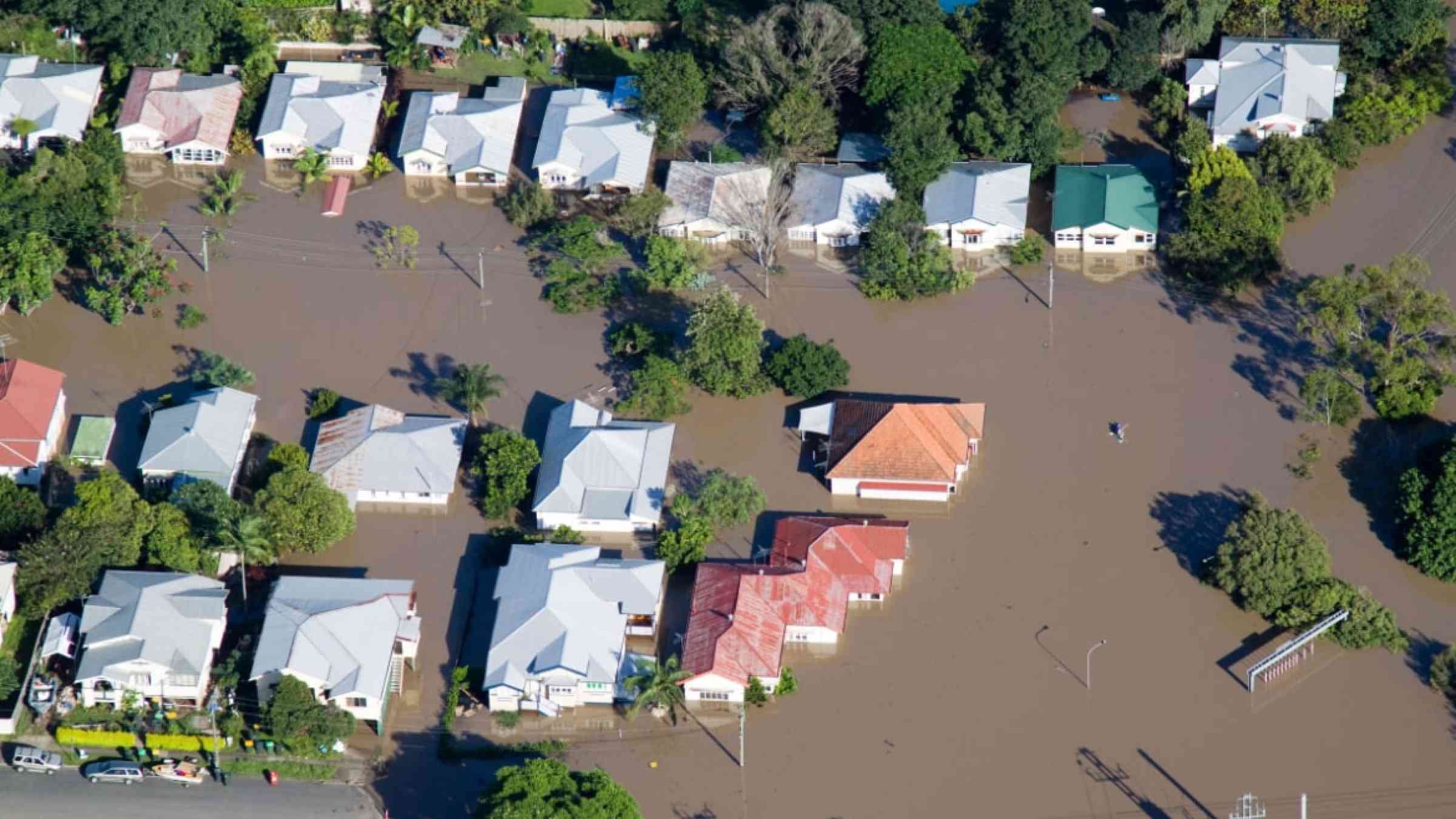Beyond avoided losses: capitalizing on the secondary benefits of investments in urban flood protection

Faced with increased climate variability, cities are increasingly considering investments in urban flood protection. However, when evaluating infrastructure investments, they often consider only the direct benefits derived from avoided losses with the costs of infrastructure works, neglecting the many secondary benefits that these investments can bring. Take Bangkok's Centennial Park. It serves not only as a retention area for floodwaters but also as an urban park that integrates nature-based solutions to provide valuable space for recreation and protection from heat for citizens.
By considering these and other secondary benefits in the decision-making processes, we can better understand the true value of flood protection and make more informed choices for our communities. It's time to start taking these benefits seriously.
Types of Secondary Benefits of Flood Protection
A recent study by Doeffinger and Rubinyi (2023), with support from Global Facility for Disaster Reduction and Recovery’s (GFDRR) City Resilience Program, highlights how an investment in urban flood protection can have many additional or secondary benefits across several areas: society, the economy, the environment, and infrastructure systems.
Societal benefits: Flood protection measures can provide a safe and resilient environment, reducing the physical and psychological impacts of flooding on communities. Parks and green spaces designed to manage floodwaters can also provide recreational opportunities and community gathering spaces.
Economic benefits: Flood protection measures can increase proximal property values, reduce business disruption, and attract new investment to the area. Redevelopment on formerly flood-prone waterfronts made possible by flood protection measures like embankments can provide new economic opportunities, including housing, commercial development, and tourism.
Environmental benefits: Flood protection measures can protect and enhance the natural environment by reducing erosion, improving water quality, and promoting biodiversity. Green infrastructure solutions, like wetlands, can manage stormwater while also providing habitats for wildlife and improving the aesthetic quality of urban areas.
Greenhouse gas (GHG) reduction benefits: Flood protection measures can play a role in reducing GHG emissions by incorporating low-carbon urban mobility options and green spaces within their design. By integrating greenways and bike paths alongside embankments, cities can promote sustainable transportation. Moreover, green spaces that have been integrated into the project design can function as a carbon sink.
Why Aren’t Secondary Benefits Being Considered
While the benefits of flood protection measures beyond risk reduction are well documented, rarely are they fully incorporated into economic analyses. This is largely due to the difficulty in quantifying them and the questions they raise around the necessary spatial and temporal scales. The study on secondary benefits of urban flood protection by Doeffinger and Rubinyi (2023) examined 20 urban flood protection projects financed by international finance institutions, finding that only seven of them mentioned secondary benefits and only three quantified and included them in the cost-benefit analysis.
One of the projects that did calculate multiple types of secondary benefits was the Can Tho Urban Development and Resilience Project. The project utilized the World Bank’s triple dividend of resilience framework to assess project benefits and costs. Under a base case (i.e. assuming no alternative scenarios), potential secondary benefits from the project accounted for 12.7% of the project’s net present value of total benefits. The Liberia Urban Resilience Project also utilized the triple divide framework and assessed the potential increase in economic activity by using a fixed percentage of the direct losses. The assumption being that investors would be more likely to finance projects due to an increased sense of safety or reduced risk. Nevertheless, the limited consideration of secondary benefits in the majority of the 20 projects’ economic analyses assessed highlights the need for improved methods to capture and quantify these benefits, as they can play a significant role in the decision-making and approval process for flood protection infrastructure investments.
Paths Forward
Climate change is already affecting our cities, and there is an urgent need for adaptation, including investing in flood protection measures. An approach that fails to integrate the multiple benefits of flood protection risks resulting in sub-optimal levels of protection and missed opportunities for enhancing urban resilience. To fully realize the benefits of urban flood protection investments and better prepare for the challenges of climate change, it is crucial to consider the secondary benefits they can bring. Here are three action points to help incorporate these benefits into the decision-making process:
- Take advantage of research and technological advancements, such as combining economic and spatial models and utilizing remote sensing, to better understand and assess the full range of benefits that flood protection measures can provide.
- Adopt a more holistic approach to cost-benefit analysis, such as frameworks like the triple dividend of resilience, to better capture and quantify the secondary benefits of urban flood protection measures.
- Plan ahead by incorporating nature-based solutions into flood protection strategies and exploring alternative financing mechanisms, such as land value capture, to maximize a project’s secondary benefits and incentivize private sector participation.
By taking these actions, we can make more informed decisions about flood protection investments and fully realize the potential benefits they can bring to our cities.